2020 Alfa Romeo Stelvio Review & Buying Guide | Small but significant changes
https://ift.tt/2QBk9OP
The 2020 Alfa Romeo Stelvio is a luxury SUV aimed at folks who want something different – not necessarily to be flashy, but just to stand out in a crowd of grey Audis and black BMWs. Besides its badge and decidedly un-German styling, the Stelvio drives like no other luxury SUV. It has quick steering with great feel and excellent road holding that provide the sort of involved driving experience you probably don’t expect from a high-riding crossover – and that goes triple for the outrageous, 505-horsepower Quadrifoglio that is without question the most desirable and competitive Stelvio.
However, to this point, choosing the Stelvio also meant putting up with some overtly cheap interior pieces, an arcane infotainment system, few accident avoidance technologies and a poor reliability reputation. As you’ll read below, all but the reliability issue have been addressed for 2020 – and only time will tell if the reliability’s been improved. These changes are welcome and make the Stelvio much easier to make a case for getting something different.
What’s new with Stelvio for 2020?
The interior’s cheap and wobbly switchgear, which so obviously stood out in the 2019 Stelvio, gets a welcome upgrade for 2020. The electronic shifter is a little more solid in action, it’s now covered in stitched perforated leather and surrounded by a metallic housing festooned with a little Italian flag. The electronic parking brake has been relocated to the left of it. The center console has also been redesigned to accommodate a wireless charging pad. Knobs for the “dna” drive mode selector, volume/track and the infotainment control knob feel more solid, while the latter is ringed by a nice knurled metal finish.
That knob, however, has become a redundant control interface as the 8.8-inch infotainment display is now touch-operated as well. It also has new graphics and a new interface with a configurable home screen. It’s a definite improvement over what was there before. The Stelvio also gets more advanced accident avoidance tech, most of which are among the best-executed on the market.
The base price has also gone down by about $1,000 for 2020 despite these upgrades. That’s rare.
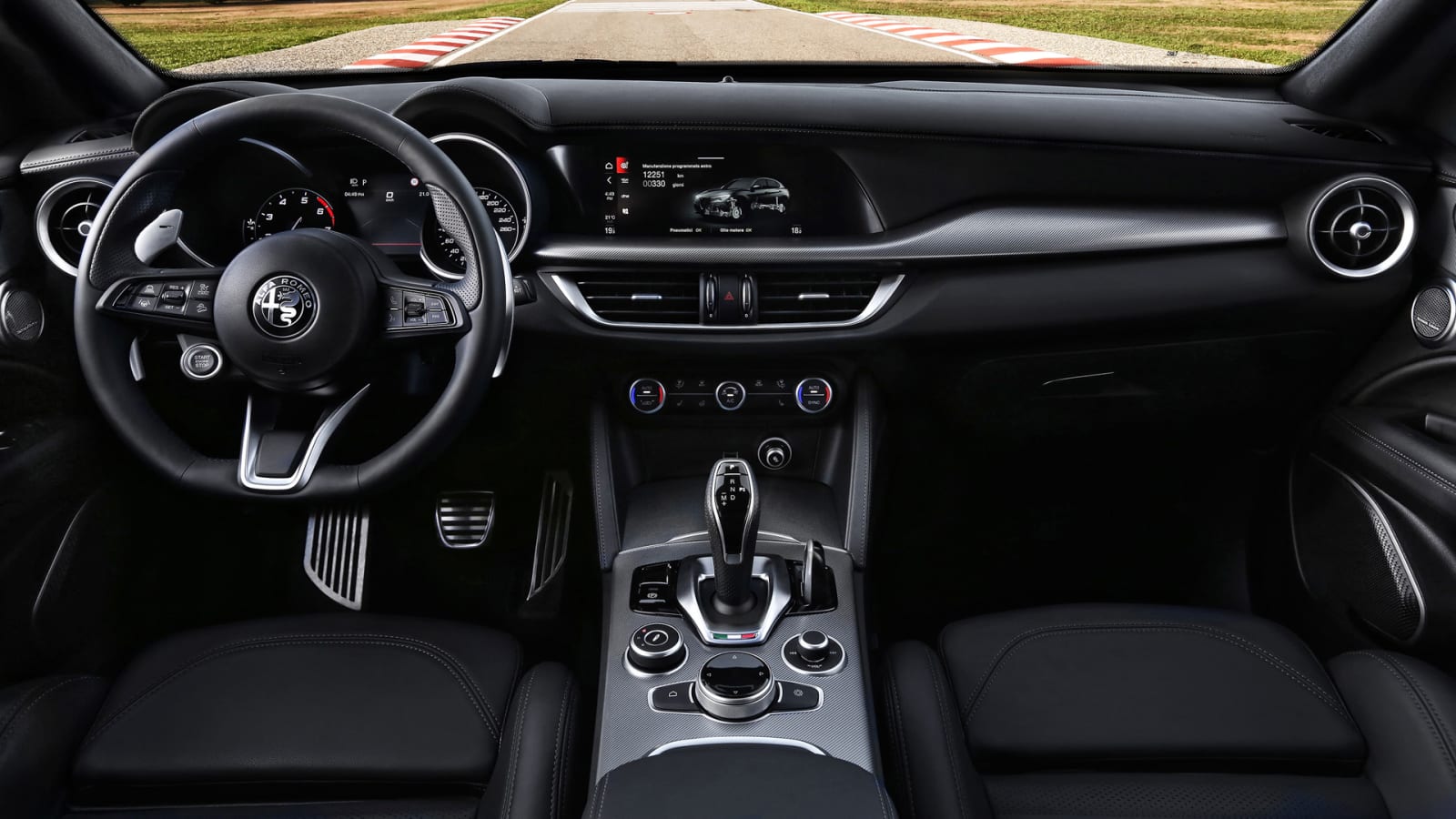
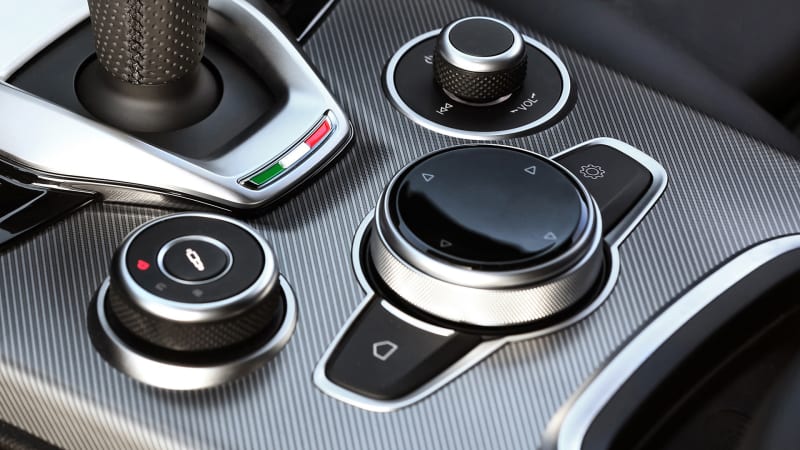
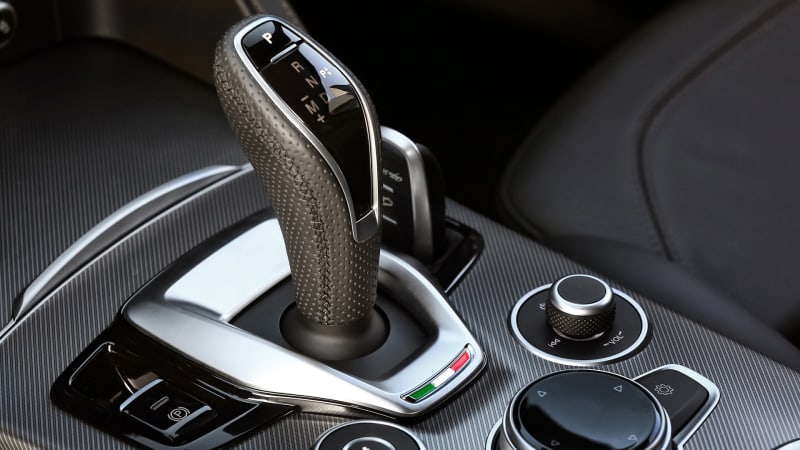
What’s the Stelvio’s interior and in-car technology like?
Despite its many worthwhile upgrades for 2020, the Stelvio’s interior still doesn’t possess the same luxurious look and feel you’ll find in an Audi, BMW, Mercedes, Porsche or Volvo. From the somewhat pedestrian design to the ho-hum materials, it seems unlikely that you’ll be buying a Stelvio for its interior ambiance. That said, it’s now less likely to put you off. The switchgear no longer looks or feels toylike, the quality of leather is still top notch, and the steering wheel alone is enough to make you forget about a few cheap bits elsewhere. It’s perfectly contoured for your hands, the attached start button is very cool, and you have to give Alfa credit for including massive, Ferrari-style paddle shifters crafted from metal.
The infotainment is also no longer a deal-breaker. Its standard widescreen is perhaps a little low and doesn’t quite offer the versatility of Porsche’s similarly configurable system, but we like that Alfa provides the redundant control option of a touchscreen and a rotary control knob. There’s nothing like BMW’s Gesture Control or natural speech recognition, but even if you get those to work (which is iffy), they’re arguably parlor tricks anyway. Apple CarPlay and Android Auto are standard along with satellite radio.
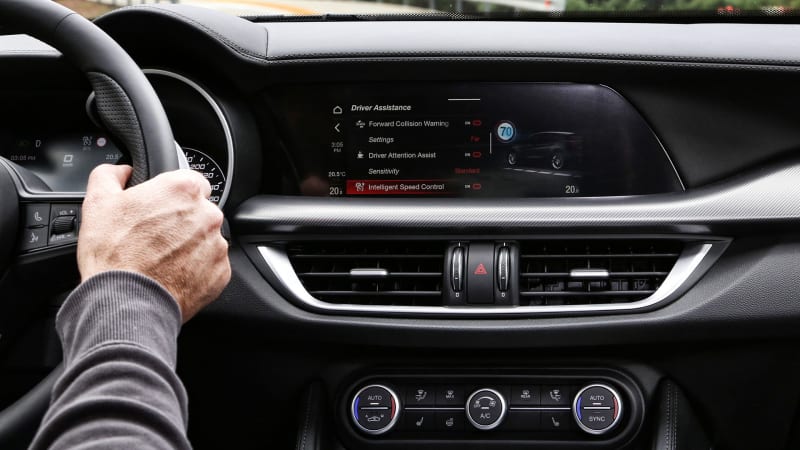
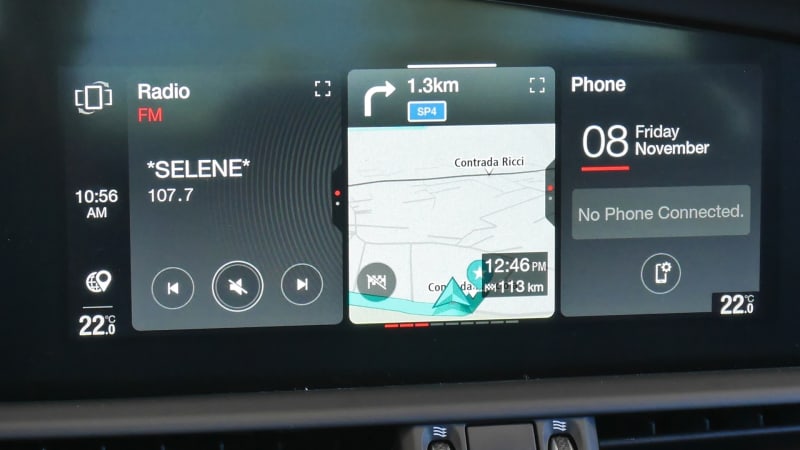
How big is the Stelvio?
Outside, the Stelvio is pretty much the same size as its primary competitors from Germany: the Audi Q5, BMW X3, Porsche Macan and Mercedes-Benz GLC. The interior is a similar story apart from two of the most important factors: backseat legroom and cargo capacity. According to Alfa’s specs, the Stelvio has 31.9 inches of rear legroom, which is a massive 5-6 inches less than those above competitors. It’s hardly a limo back there, but it’s certainly not that much different than those competitors in practical terms, and we suspect this could be a matter of differing measuring techniques.
The same could be said of the cargo area, which as we discovered in our Stelvio luggage test, is capable of carrying far more luggage than its paltry official measurement would indicate (so much so, the number’s not even worth mentioning). We found it could hold five suitcases of various sizes, which is pretty good for an SUV of this size. The maximum cargo volume of 56.5 cubic-feet does seem realistic. It’s not as much as you’ll find in a BMW X3 or Volvo XC60, but it matches the GLC and betters the Q5 and Macan.
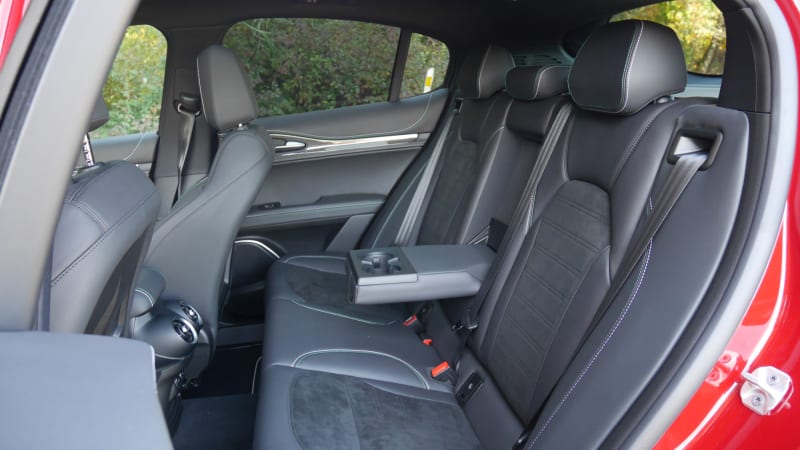

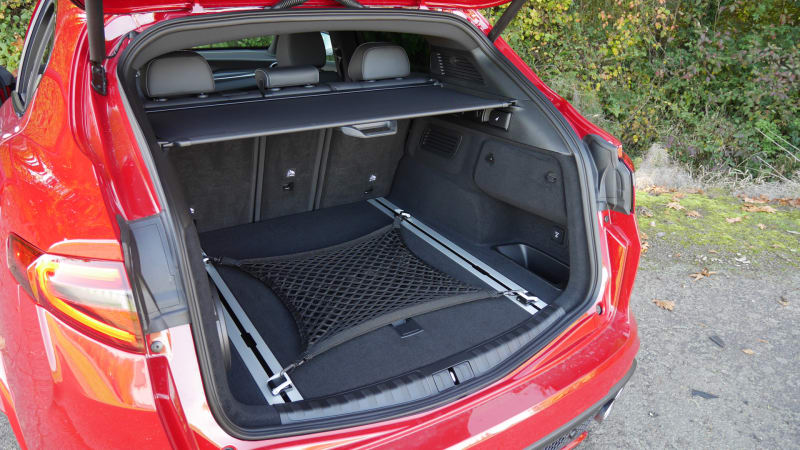
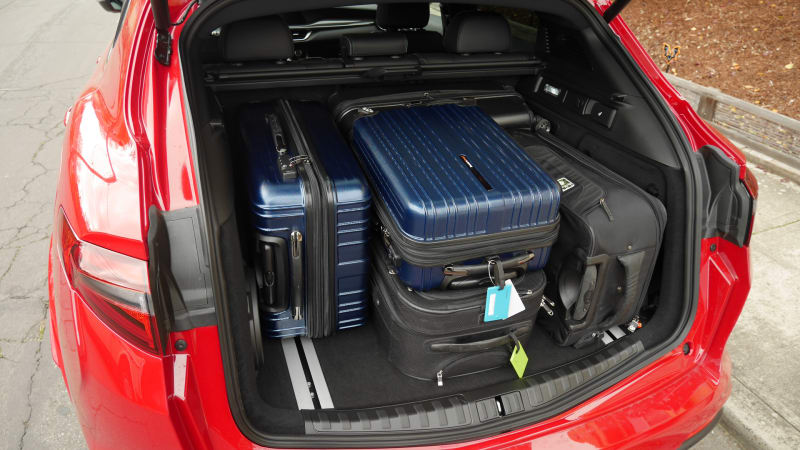
What’s the Stelvio’s performance and fuel economy?
The Stelvio comes standard with a 2.0-liter turbocharged four-cylinder, as virtually all of its competitors do. However, it produces 280 hp and 306 pound-feet of torque, which basically crushes them all, and consequently results in a 0-to-60-mph sprint of 5.4 seconds – ditto. An eight-speed automatic and rear-wheel drive are standard, but all-wheel drive is optional. Fuel economy stands at 22 mpg city, 29 mpg highway and 25 mpg with RWD and 22/28/24 with AWD. This is comparable to most competitors.
The 2020 Alfa Romeo Stelvio Quadrifoglio, pictured below, is powered by a 2.9-liter twin-turbo V6 derived from a modular Ferrari engine family that produces 505 hp and 443 lb-ft of torque. It’s standard with an eight-speed auto and AWD. It’s been clocked doing 0-to-60 in the mid-3-second range, which is absolutely bonkers for an SUV – or anything, really. It has far more power and is far quicker than a Porsche Macan Turbo, for instance, which costs more. The Stelvio Quadrifoglio’s fuel economy is 17/23/19, which isn’t too bad given its level of performance.
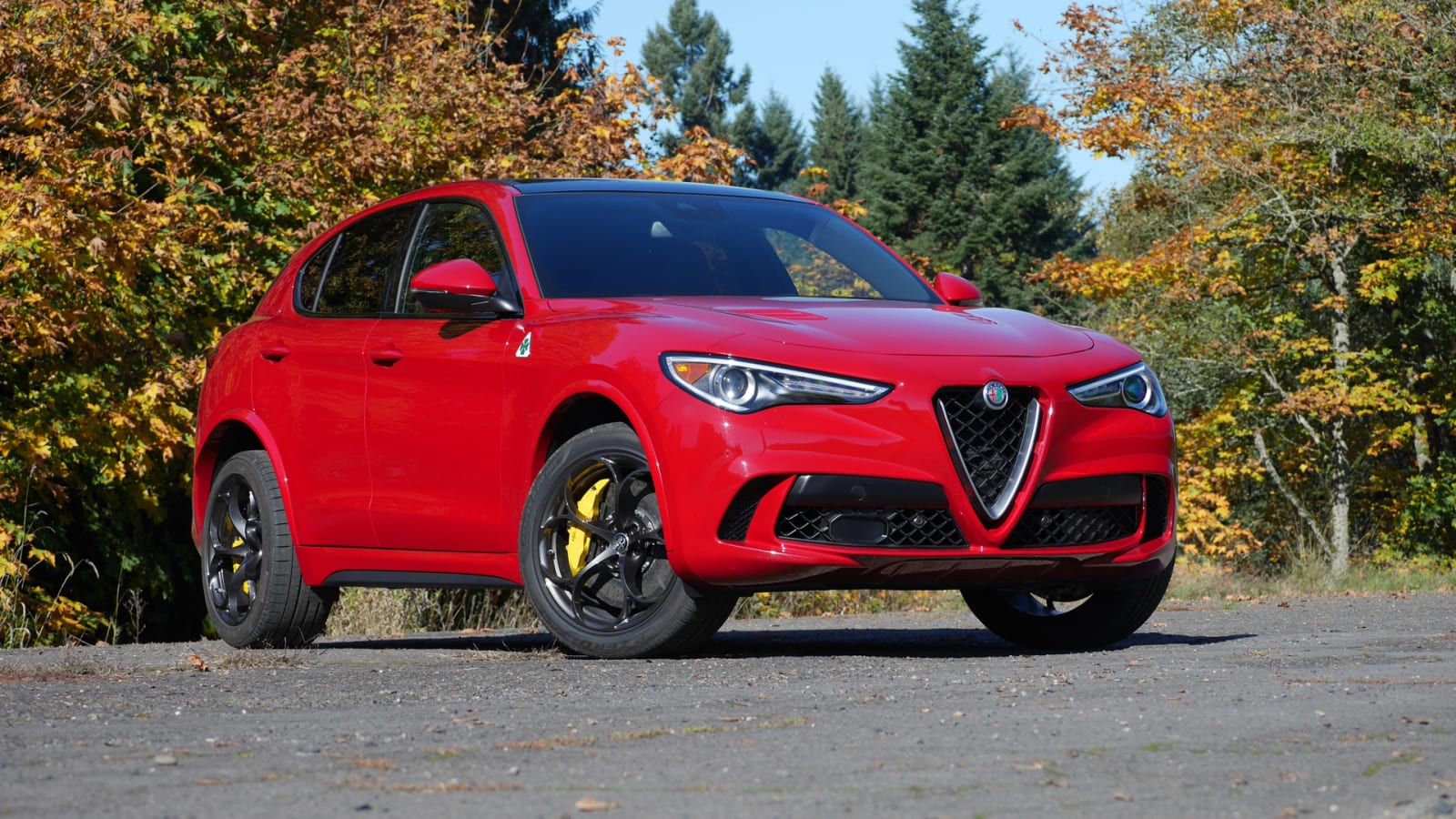
What’s the Stelvio like to drive?
The Stelvio will immediately feel a little different behind the wheel than its competitors due to steering that is shockingly quick, yet precise and easily operated at low parking-lot speeds. Beyond that, the standard Stelvio impresses with its abundant power, nicely damped ride quality and above-average road-holding. However, it’s not quite as zesty or characterful as you might expect. It generally feels more like a regular luxury SUV than in comparison to its Alfa Romeo Giulia sibling, which stands out stronger in comparison to its own sport sedan competition. Sharper response, perhaps a bit closer to the Quadrifoglio’s, or a more interesting engine/exhaust note might do the trick.
There’s no shortage of zest in the Quadrifoglio, however, which is as sizzling and wild as you might have heard. Like the exceptional steering, all its other controls need a similarly deliberate and precise touch. The brakes have a right-now biting action, the throttle doesn’t tolerate stabby inputs, and the pedals are located as close together as they would be a sports car (driving in work boots is not recommended). The Quadrifoglio also exhibits sports-car-like behavior at low speeds, with more off-throttle slowing than you’re probably used to in a car with a regular automatic transmission. As such, it can be a little uncouth when in traffic, feeling like a caffeinated puppy desperately trying to break out and run around the house.
Road holding is exceptional, and whoever thought of including a Soft Suspension button for the car’s “dynamic” mode was a genius (a feature also available on Sport trims). It allows you to quickly soften the springs when driving on bumpy pavement that can upset the car’s chassis or your spine. Ride quality is actually quite good given this hyper-performance SUV’s sporting bent.
What more can I read about the Alfa Romeo Stelvio?
2019 Alfa Romeo Stelvio Quadrifoglio Review | Heck of a third impression
We’re blown away by the way it drives (that still stands) and are underwhelmed by its interior (since corrected, mostly).
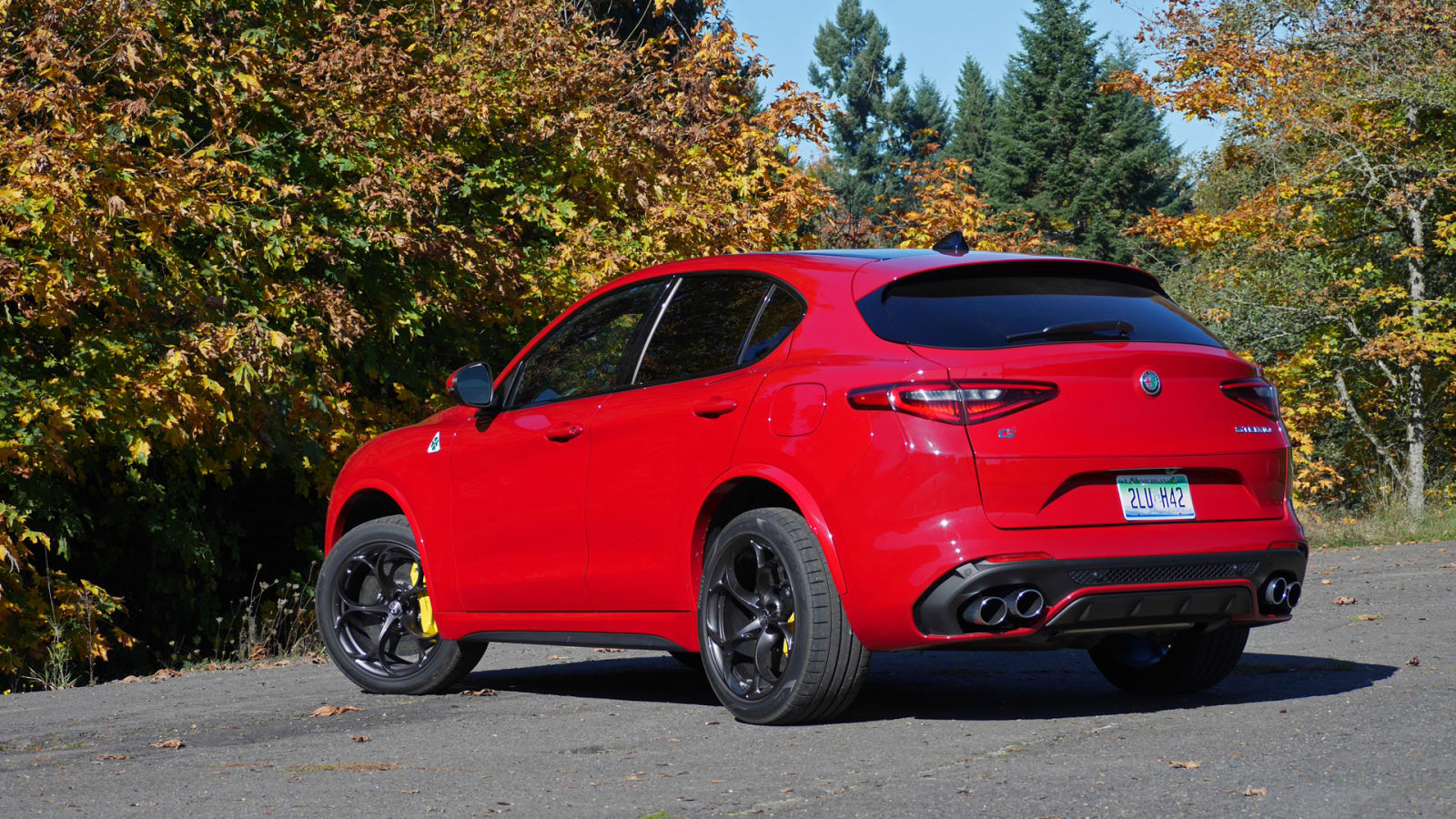
2019 Alfa Romeo Stelvio Luggage Test
Find out how much luggage fits in the Stelvio, plus other cargo area attributes.
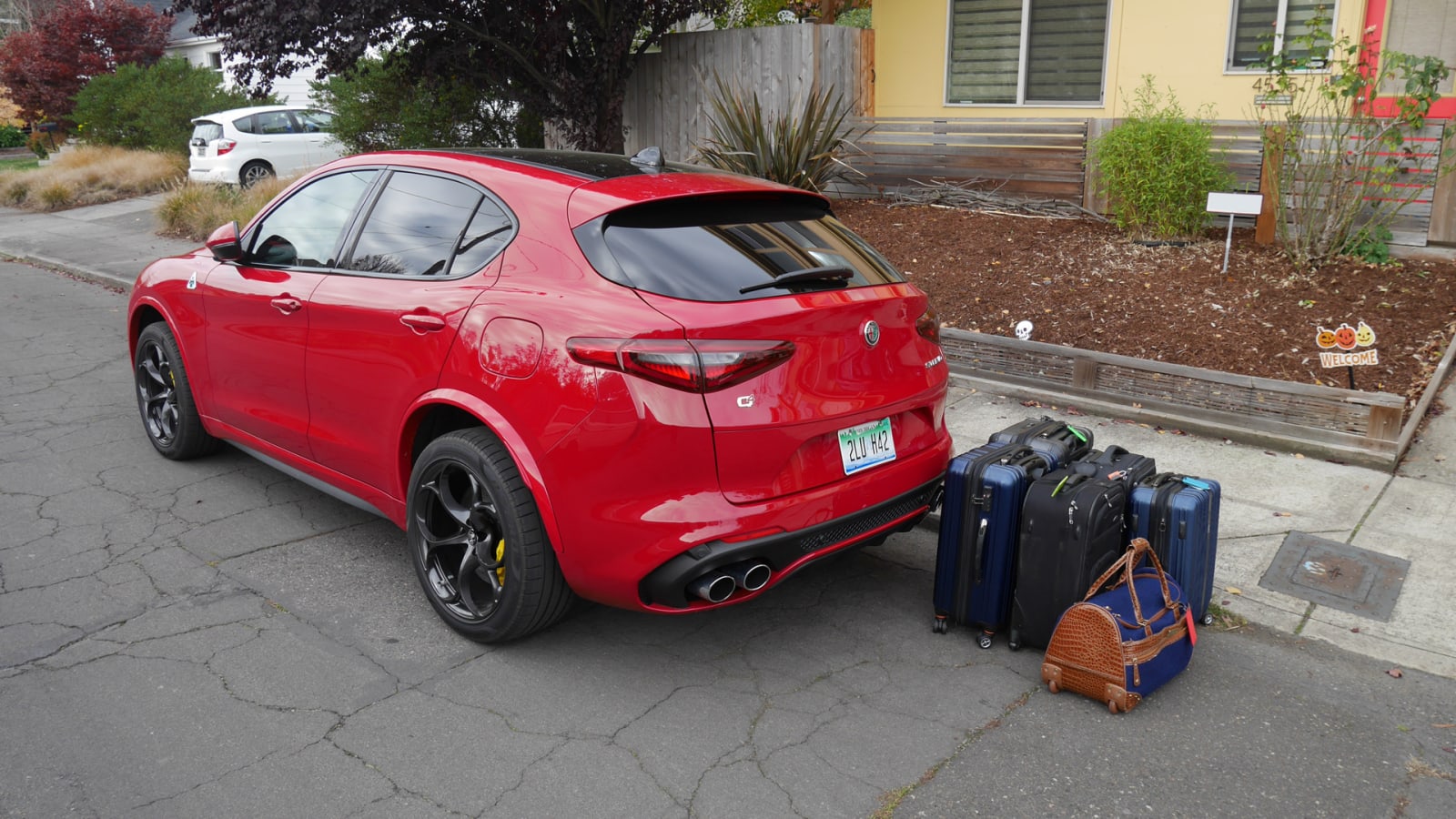
2018 Alfa Romeo Stelvio Drivers’ Notes
Our review of a Ti Sport trim level model.
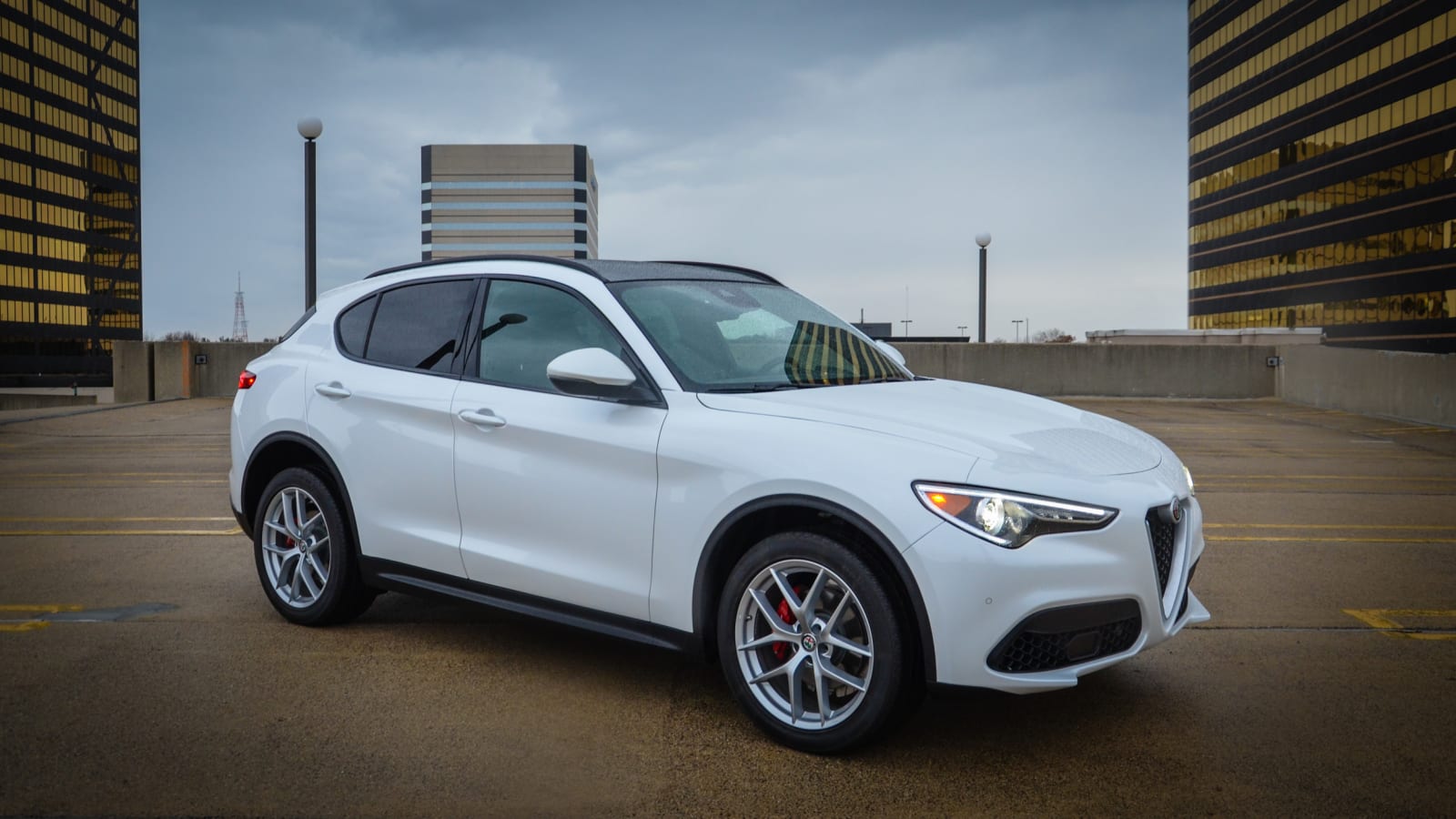
2018 Alfa Romeo Stelvio First Drive
Our first drive of the Stelvio, including in-depth information about its design and engineering.
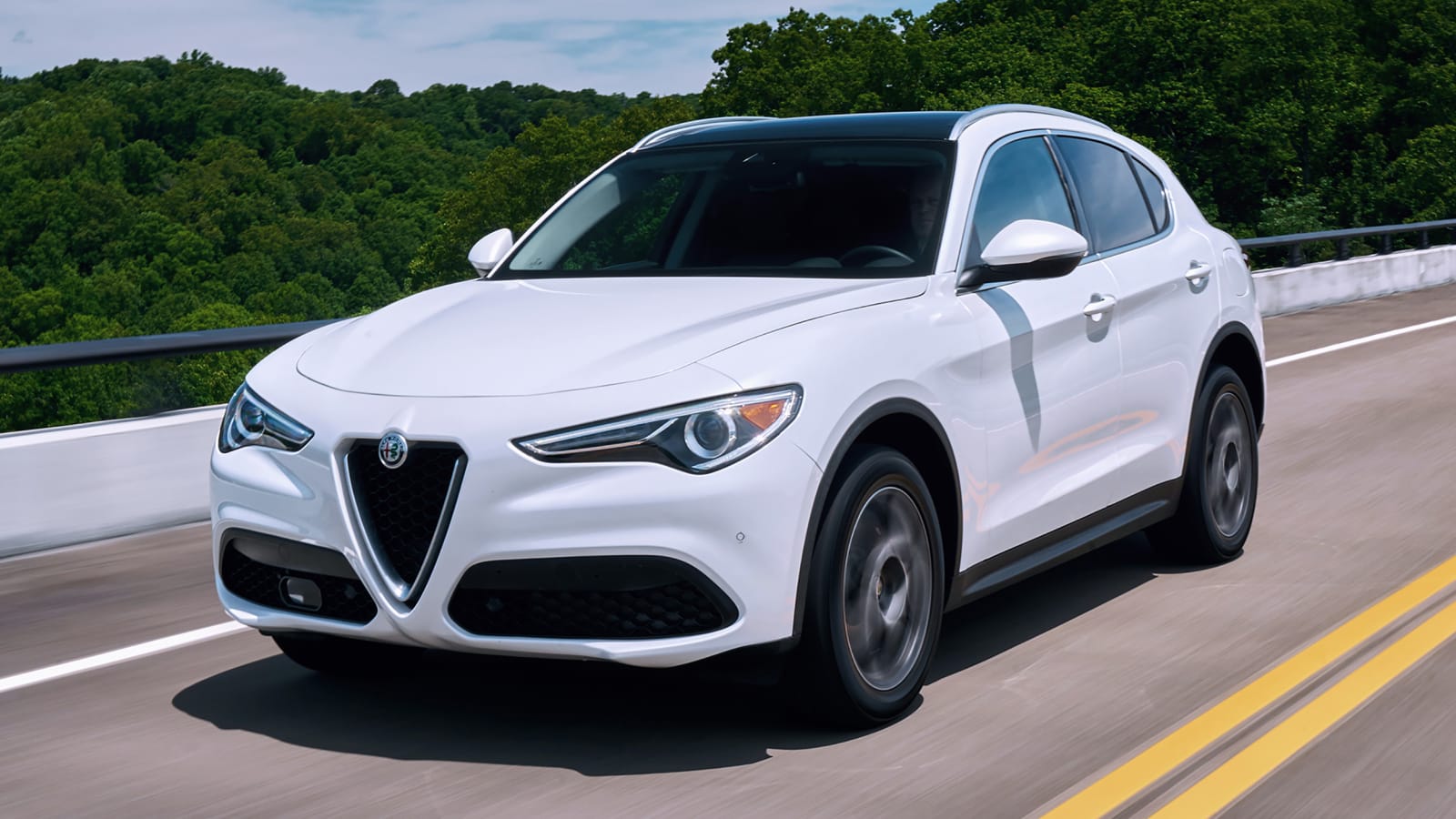
What features are available and what’s the Stelvio’s price?
The 2020 Stelvio is available in base, base Sport, Ti, Ti Sport and Ti Lusso trims, plus the high-performance Quadrifoglio. The Sport variants add a sport-tuned suspension, performance tires, gloss-black exterior trim, a choice of colored brake calipers (black, red or yellow), and on the Ti version, real aluminum trim and sport seats and steering wheel. The Lusso, which means “luxury” in Italian, gets leather-wrapped dash and doors, real wood trim and a “luxury” trim steering wheel. Besides its high-performance engine, the Quadrifoglio gets upgraded suspension, steering and brakes (upgradeable to carbon ceramic discs), distinctive styling elements and badging, leather-wrapped dash and doors, carbon fiber trim, a seat upholstery mix of leather and Alcantara, and its own sport seats and steering wheel.
Pricing for each trim level is below, all of which include destination ($1,295 for most trims, $1,595 for Quadrifoglio). AWD is a $2,000 option on the base and Sport, and standard on everything else. You can find a full breakdown of specs, features and local pricing for each trim level here at Autoblog.
- Base Stelvio: $42,640
- Base Sport: $44,090
- Ti: $47,040
- Ti Lusso: $49,540
- Ti Sport: $49,540
- Quadrifoglio: $82,040
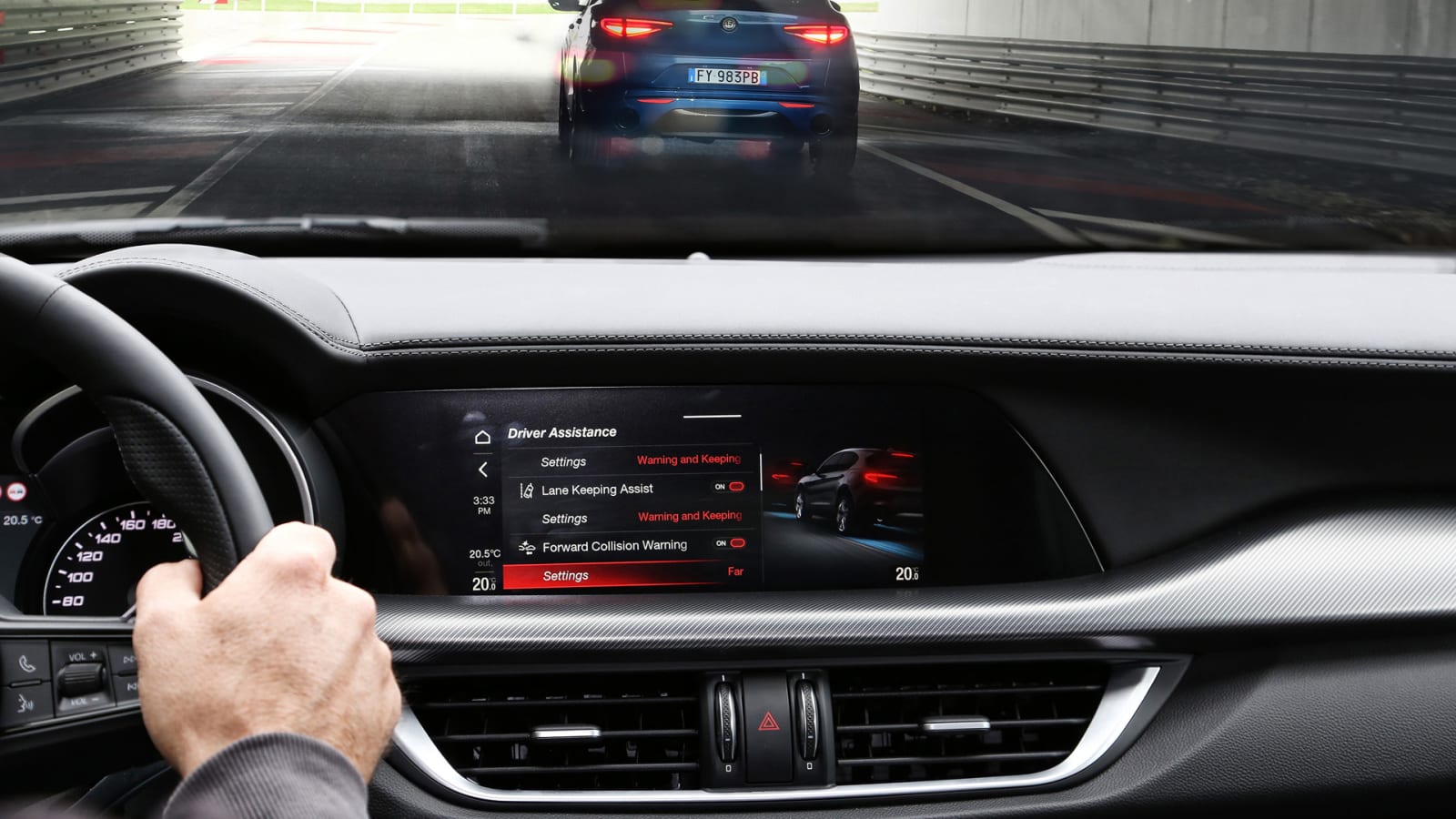
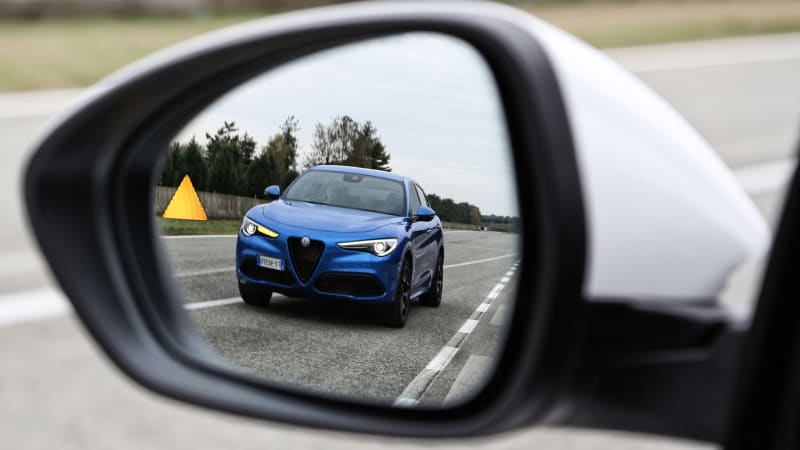

What are the Stelvio’s safety equipment and crash ratings?
Every 2020 Stelvio comes standard with a full-speed forward collision warning system with automatic emergency braking, but all the other driver aids and accident avoidance tech are found in packages. Blind-spot warning with steering intervention is a stand-alone option on base, base Sport and Ti models. The base models are offered in a Driver Assistance Dynamic package that adds adaptive cruise control (ACC), lane-departure warning and automatic high beams. The Active Driver Assistance package available on Ti and Quadrifoglio bolsters those items with steering assistance for the lane-departure and ACC systems, the blind-spot system, and stop-and-go capability for ACC. The Quadrifoglio version also has driver inattention warning. We found these system to be well-executed, especially the adaptive cruise control. It’s disappointing they aren’t all standard, but that’s unfortunately the norm for luxury brands.
The Stelvio has not yet been crash tested by a third party.
Auto Blog
via Autoblog https://ift.tt/1afPJWx
November 19, 2019 at 09:31AM
